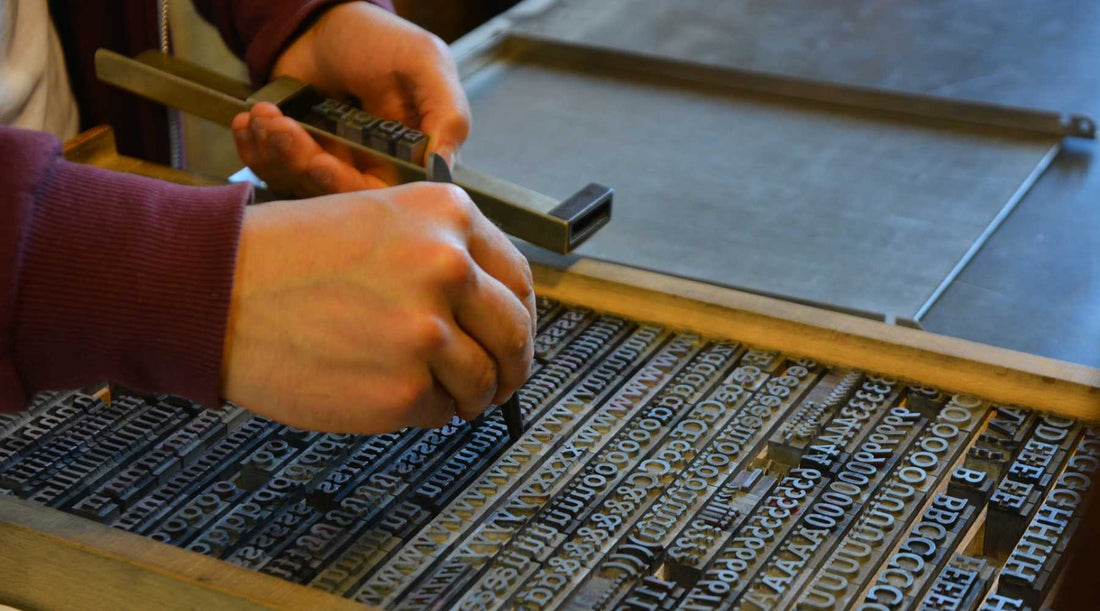
Discover the magic of hand printing: a traditional art form brought back to life in the digital age.
Share
introduction
In our modern world of technological and digital advancements, talking about hand-printing may seem like a return to the past or a succumb to nostalgia. However, the truth is that this traditional art is still alive and kicking, and is seeing increasing interest and demand from artists, designers, and those interested in culture and heritage.
So what is handprinting? What is its historical and cultural significance? Why is it gaining popularity in the digital age? What unique benefits and advantages does it offer to practitioners and recipients?
In this article, we will attempt to answer these questions. We will review various popular hand-printing techniques, explaining each technique in a clear and simplified manner, providing examples of its uses. We will also provide a historical overview of the development of each technique and its most important pioneers, and discuss the tools and materials needed to practice each technique. We will conclude the article by emphasizing the artistic and aesthetic value of hand-printing and encouraging or supporting its experimentation.
| the topic | Content |
|---|---|
| What is hand printing? | It is the process of producing text and images on paper or other materials using manual tools and techniques. |
| What is its historical and cultural significance? | It is a means of transmitting knowledge and expressing identity and creativity in various civilizations and eras. |
| Why is it back in popularity in the digital age? | Because it provides a unique artistic and sensory experience for practitioners and recipients, and carries a high aesthetic and heritage value. |
| What are the unique benefits and advantages of hand printing? | It includes artistic freedom, creative diversity, high quality, environmental sustainability, and social and educational interaction. |
Hand printing concept
Printing is the process of producing text and images on paper or other materials using various tools and techniques. Printing is divided into two main types: digital printing and hand printing.
Digital printing relies on computers and electronic printers to transfer images from the source to the medium. It's the fastest and easiest method, but it lacks the artistic spirit and aesthetic distinction.
Hand printing is printing that uses hand tools and techniques to transfer text and images from blocks, plates, or other materials. It is slow and difficult to produce, but it carries a high artistic and heritage value, providing a unique sensory and creative experience.
The origins of hand printing date back to ancient times, when humans relied on walls and leather for engraving and drawing. Hand printing evolved over time, and new and diverse techniques emerged, such as movable type printing and woodblock printing, among others.
Hand printing has also been a means of transmitting knowledge and expressing identity and creativity across civilizations and eras. It has contributed to the dissemination of philosophies, sciences, literature, and the arts.
Types of hand printing
There are many manual techniques used in printing, but in this section we will focus on three types of printing:
movable type printing

It is a printing technique that uses letters and symbols made of metal or wood, arranged in rows and columns to form text and images. The letters are then covered with ink, after which the letters are placed on paper or fabric under pressure to transfer the intaglio or lettering to the board.
This type of printing was invented by the Chinese in the eleventh century, brought to Europe by the Arabs in the fifteenth century, and subsequently spread throughout the world. This technology revolutionized the field of printing, allowing for the mass production of books and printed materials, quickly and at a lower cost.
One of the most famous works printed with movable type is the Bible printed by Johannes Gutenberg in Germany in the mid-fifteenth century, which is considered the first printed book in history.
To practice this technique, you will need the following tools and materials:
- Movable letters and symbols made of metal, wood, or rubber, in various sizes, shapes, and fonts.
- A holder to organize letters and hold them in place.
- Printing ink suitable for the material used in the letters.
- A brush or roller for applying ink to letters.
- Paper or other material for printing.
- A press for pressing letters and transferring them to paper.
wood printing

It is a printing technique that uses wood as a medium to transfer images to other materials. This technique involves carving or engraving the image to be printed onto a piece of wood, leaving the raised portions of the wood unengraved and representing the image. These raised portions are then covered with ink and pressed against the material to be printed.
This technology is considered one of the oldest printing techniques , having originated in China in the eighth century and spread to Japan, India, the Middle East, and Europe. It was used to print religious, artistic, and commercial texts and images.
Among the most famous woodblock prints are the Japanese paintings known as ukiyo-e, meaning "pictures of the floating world," which depict landscapes, daily life, and celebrities in 17th and 18th-century Japan.
To practice this technique, you will need the following tools and materials:
- A piece of wood that is solid, flat, smooth, and free of cracks and knots.
- Knife, file, lathe, or any sharp tool for carving or engraving the image on wood.
- Printing ink suitable for wood, usually water-based or oil-based.
- A brush or roller for applying ink to wood.
- Paper or other material for printing.
- A press, tongs, or any tool for pressing wood and transferring it to paper.
lithography

This technique involves drawing the image to be printed on a smooth, porous stone surface using a pen or brush dipped in a greasy or waxy substance. The stone is then sprayed with an acidic solution, which reacts with the areas not covered by the greasy substance and causes them to absorb water. The image is then covered with oil-based ink, which adheres only to the greasy areas. The material to be printed is then pressed onto the stone.
This technique was invented by the German Alois Zinfelder at the end of the 18th century, and became widespread in the 19th century, and was used to print artistic images, caricatures, and advertisements.
Among the most famous lithographs are the series of paintings by the Frenchman Henri de Toulouse-Lautrec, depicting the life of cabarets, theaters, and cafés in Paris at the end of the 19th century.
To practice this technique, you will need the following tools and materials:
- A stone made of limestone, marble, or granite, with a smooth, clean surface.
- A pen or brush dipped in a greasy or waxy substance, for drawing an image on stone.
- Acidic solution, to activate the stone and prepare it for printing.
- Oil-based printing ink.
- Paper or other material for printing.
- A press or any tool for pressing stone and transferring it to paper.
Challenges and efforts related to hand printing
Despite the value, beauty, and distinction of hand-printing, it faces numerous challenges in the digital age that threaten its extinction or marginalization. Among these challenges are:
- The scarcity, high cost, and difficulty of obtaining the tools and materials needed for hand printing.
- Lack of craftsmen and artists specializing in hand printing, and lack of courses that teach and disseminate it.
- The audience and market prefer digital products and ready-made prints, which are cheaper and faster.
- Changing tastes, fashions and trends in design, art and culture, which tend towards modernity, innovation and technology.
However, there are numerous efforts being made to preserve, develop, and disseminate this traditional art form. These efforts include:
- Establish museums that display and honor hand-printed works and their creators.
- Organizing courses to teach and discuss the techniques and benefits of hand printing.
- Launching hand-printing publishing projects.
- Development of tools and materials used.
conclusion
In this article, we learned about hand printing , its nature, and its importance. We discovered the magic of this traditional art form, which is coming back to life in the digital age, providing us with a unique artistic, sensory, and creative experience. We also realized the artistic, aesthetic, and heritage value of hand printing, which deserves to be preserved and nurtured.
We hope you find this article useful and enjoyable, and we invite you to try handprinting yourself, or to support the craftsmen, artists, and initiatives that work to preserve and develop it. Thank you for your interest and interaction with us. 😊




